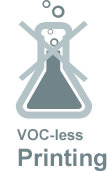-
All Products
3
A
B
- Bag Toppers or Header Cards
- Banner Stands10% Off
- Banners10% Off
- Book Printing10% Off
- Booklets & Catalogs10% Off
- Bookmarks
- Boxes
- Brochures10% Off
- Buck Slip
- Business Cards15% Off
- Button Pins
C
- Calendars10% Off
D
- Die-cut Products15% Off
- Direct Mail Marketing10% Off
- Door Hangers
E
- Envelopes
- Every Door Direct Mail10% Off
F
- Flyers10% Off
- Full Color Roll Label20% Off
H
I
L
- Label, Stickers & Decals 20% Off
- Letterhead
- Luxury Cards10% Off
M
- Magnets10% Off
- Maps
- Market Place10% Off
- Menu Printing
N
P
- Placemats
- Plastic Printing15% Off
- Playing Cards
- Postcards10% Off
- Posters10% Off
- Presentation Folders
- Printing by Industry10% Off
- Promotional Products
R
S
- Sample Kits
- Shaped Products15% Off
- Signs15% Off
T
- Table Tents
- Tickets
- Tote Bags
- Trade Show Products10% Off
- Trading Cards
- T-shirts10% Off
W
- Wall Arts10% Off
- Wrapping Papers
- Wrist Bands
Y
- Yard Signs10% Off
View All Products Looking for something else? Try our Custom Job Service.View All Products Looking for something else? Try our Custom Job Service.View All Products Looking for something else? Try our Custom Job Service. -
Marketing Materials
- Direct Mail Services
-
Business Cards
Standard Business Cards 15% Off
- Standard Business Cards 3.5x210% Off
- Slick Business Card 3.5x1.510% Off
- Tiny Business Cards 3.5x110% Off
- European Business Cards 3.35x2.1710% Off
- View More >>
Soft Touch 17pt. Business Cards 15% Off
- Soft Touch Standard Business Cards 3.5x210% Off
- Soft touch Slick Business Card 3.5x1.510% Off
- Soft Touch Tiny Business Cards 3.5x110% Off
- Soft Touch European Business Cards 3.35x2.1710% Off
- View More >>
Soft Touch 32pt. Business Cards 15% Off
- Soft Touch 32pt. Business Card 3.5x210% Off
- Soft Touch 32pt. Business Card 3.5x1.510% Off
- Soft Touch 32pt. European Business Cards 3.35x2.1710% Off
- Soft Touch 32pt. Square Business Cards 2x210% Off
- View More >>
Foil Accent Business Cards 15% Off
Square Business Cards 15% Off
- Square Business Card 2x210% Off
- Square Business Card 2.5x2.510% Off
- Square Business Card 3x310% Off
Luxury Business Cards 15% Off
- Luxury Business Card 3.5x210% Off
- Luxury Slick Business Card 3.5x1.510% Off
- Luxury European Business Cards 3.35x2.1710% Off
- Luxury Square Business Cards 2x210% Off
- View More >>
Fold Over Business Cards 15% Off
Shaped Business Cards 15% Off
Opaque Plastic Business Cards 15% Off
- Plastic Business Card 3.5x2 inch (US Standard)10% Off
- Plastic Business Card 3.35x2.17 inch (European Standard)10% Off
- Plastic Slick Business Card 3.5x1.5 inch 10% Off
- Plastic Square Business Card 2x2 inch10% Off
- View More >>
Clear Plastic Business Cards 15% Off
- Clear Plastic Business Card 3.5x2 inch10% Off
- Clear Plastic Business Card 3.5x1.5 inch10% Off
- Clear Plastic Business Card 2x2 inch10% Off
- Clear Plastic Business Card 2.5x2.5 inch10% Off
- View More >>
Specialty Business Cards 15% Off
- Gold Business Cards10% Off
- Silver Business Cards10% Off
- Pearl Business Cards10% Off
- Kraft Business Cards10% Off
- View More >>

- Books & Booklets
-
Labels & Stickers
-
Invitation & Stationery
InvitationsStationeries
-
Signs & Banners
SignsBannersPostersRigid SignsAdvertising FlagsWall Arts
- Banner Stands 10% Off
- X Banner stand 24" x 63"10% Off
- Everyday Retractable Banner Stand - 33"10% Off
- Economy Retractable Banner Stand - 33"10% Off
- Premium Retractable Banner Stand - 33"10% Off
- Wide Retractable Banner Stand - 47"10% Off
- Tension Fabric Stand 36"x90"10% Off
- Table Top Banner Stand 11.5"x17.5"10% Off
- SD Retractable Banner Stand 36"x92"10% Off
- SD Retractable Banner Stand 48"x92"10% Off
- SD Retractable Banner Stand 60"x92"10% Off
- View More >>
- Banners 10% Off
- 13oz. Standard Vinyl Banner 10% Off
- 13 oz Supersize Vinyl Banner10% Off
- 18oz. Premium Vinyl Banner10% Off
- Pole Pocket Banner10% Off
- Indoor Banner10% Off
- Mesh Banner10% Off
- Fabric Banner10% Off
- Fabric Banner Blockout10% Off
- Signs On Rigid Substrate 10% Off
- PVC Sign (3 mm)10% Off
- PVC Sign (6 mm)10% Off
- Dibond Sign (3 mm)10% Off
- Aluminum Sign (0.04 inch)10% Off
- Aluminum Sign (0.08 inch)10% Off
- Gatorboard Sign (3/16 inch)10% Off
- Foamcore Sign (3/16 inch)10% Off
- Coroplast Sign (4 mm)10% Off
- Coroplast Sign (10 mm)10% Off
- Styrene Sign (30 mil)10% Off
- Clear Acrylic Sign 3/16 inch10% Off
- Magnetic Sign (30 mil)10% Off
- Dry Erase Magnet (30 mil)10% Off
- Dry Erase Dibond10% Off
- View More >>
- Tshirts & Promo
-
Trade Shows
-
- X Banner stand 24" x 63"
- Everyday Retractable Banner Stand - 33"
- Economy Retractable Banner Stand - 33"
- Premium Retractable Banner Stand - 33"
- Wide Retractable Banner Stand - 47"
- Tension Fabric Stand 36"x90"
- Table Top Banner Stand 11.5"x17.5"
- SD Retractable Banner Stand 36"x92"
- SD Retractable Banner Stand 48"x92"
- SD Retractable Banner Stand 60"x92"
- 10ft Event Canopy
- Event Canopy Carrying Bag w/ Wheels
- Event Canopy Hardware
- Replacement Graphics for Event Canopy
- Curve Shape Tension Fabric 10% Off
- Curve Shape Velcro Fabric 10% Off
- Straight Shape Tension Fabric 10% Off
- Straight Shape Velcro Fabric 10% Off
- Table Covers for 6 & 8 ft. Tables
- Stretch Table Throw for 6ft. & 8ft. Tables
- Solid Color Table Covers for 6ft. & 8ft. Tables
- Table Runners

Pop-up Displays
Pop-Up Displays for all sizes of Trade Show Booths (6ft, 8ft, 10ft, 20ft). Comes with full-color printed graphics
Order Now -
- 8ft Straight Tension Fabric Display
- 10ft Straight Tension Fabric Display
- 20ft Straight Tension Fabric Display

Pop-up Displays
Pop-Up Displays for all sizes of Trade Show Booths (6ft, 8ft, 10ft, 20ft). Comes with full-color printed graphics
Order Now
Pop-up Displays
Pop-Up Displays for all sizes of Trade Show Booths (6ft, 8ft, 10ft, 20ft). Comes with full-color printed graphics
Order Now
Pop-up Displays
Pop-Up Displays for all sizes of Trade Show Booths (6ft, 8ft, 10ft, 20ft). Comes with full-color printed graphics
Order Now
Pop-up Displays
Pop-Up Displays for all sizes of Trade Show Booths (6ft, 8ft, 10ft, 20ft). Comes with full-color printed graphics
Order Now
Pop-up Displays
Pop-Up Displays for all sizes of Trade Show Booths (6ft, 8ft, 10ft, 20ft). Comes with full-color printed graphics
Order Now
Event Tents
Achieve 360 degrees of branding with a custom full fabric dye sub canopy and hardware package.
Order Now -

Event Tents
Achieve 360 degrees of branding with a custom full fabric dye sub canopy and hardware package.
Order Now
Event Tents
Achieve 360 degrees of branding with a custom full fabric dye sub canopy and hardware package.
Order Now
Event Tents
Achieve 360 degrees of branding with a custom full fabric dye sub canopy and hardware package.
Order Now
Event Tents
Achieve 360 degrees of branding with a custom full fabric dye sub canopy and hardware package.
Order Now
Event Tents
Achieve 360 degrees of branding with a custom full fabric dye sub canopy and hardware package.
Order Now
Banner Stands
PrintPapa, one of the top sellers of banner stands in Bay Area, California, offers different types of roll-up banner stands online.
Order Now
-
Printing by Industry
Political Printing 10% Off
Political Campaign Banners 10% Off
Political Campaign Direct Mail Postcards 10% Off
Political Campaign Doorhangers
Political Campaign Flyers 10% Off
Political Campaign Palm Cards
Political Campaign Yard Signs
Papa Knows Green

Chemistry-free Imaging
Our presses eliminate the need for:
- chemical processing
- production steps associated with film-based plate making
- separate imaging of plates using an offline CTP system
PrintPapa's presses achieve this efficiency by automatically imaging the printing plates and printing the job directly on press. The digital file is sent to the DI press where all four plates are simultaneously imaged in precise register. Plates are imaged via a thermal process; the heat from the lasers removes the top layers of the plate material, exposing the ink receptive layer. The laser and digital plate comprise an optimized system that eliminates the use of chemistry in the plate making process. Direct imaging also significantly reduces the need to store and dispose of chemistry. Worldwide, it is estimated that more than 31 million gallons of chemistry are used in imaging printing plates every year.

VOC-less Printing
Volatile organic compound (VOC) emissions have been linked to the breakdown of the Ozone layer, contributing to global warming. Our presses waterless press design eliminates what is typically the largest portion of a printer's VOC output - solvent based press and blanket wash solutions. These benefits - combined with the on-press chemistry-free thermal imaging and the automated ink cleaning functions - reduce VOC output by up to 90 percent.

Water Conservation
Conventional offset printing requires water for plate processing and for the press dampening system. DI printing does not use water. The chemically tainted waste water from traditional offset printing is eliminated. The August 2006 United Nations - Water Thematic Issues report, Coping with the Scarcity of Water, speaks to the importance of maintaining and preserving our water supply and projects that 1.8 billion people will be living in countries or regions with absolute water scarcity by 2025 if water use continues at its current rate.

Design Green
The importance of design in green printing cannot be underestimated. After all, as printers, we will work with the files and specifications that you provide to us. Certainly, we'll ensure that our printing practices are environmentally sound, but the decisions about what needs to be printed, for what purpose, and in what quantities are generally decided upon beforehand.
Here is a Sustainable Design Checklist that covers topics such as strategy, execution, production, distribution, and end-of-useful life. Some of their suggestions for auditing the sustainability of a printed piece include:
- Serves multiple purposes and maximizes shelf life
- Raises awareness by displaying environmental specs
- Limits ink coverage and areas of solid color
- Is printed by a printer that has environmental certification
- Uses recycled and/or FSC-certified paper that was processed chlorine-free
- Uses soy- and vegetable-based inks and avoids metallic inks
- Avoids foilstamping, thermography, and lamination
- Uses up-to-date mailing lists that accurately target your audience
We hope you've found this information helpful... if you have other suggestions or ideas, please feel free to submit them via a comment on our blog.
"We believe companies that take advantage of environmental opportunities can gain a competitive advantage over their peers through cost reductions, quality improvements, increased profitability, and access to new and growing markets."
- Jackson W. Robinson President of the Winslow Management Company
(Winslow Environmental News, Volume 14, Number 2)
